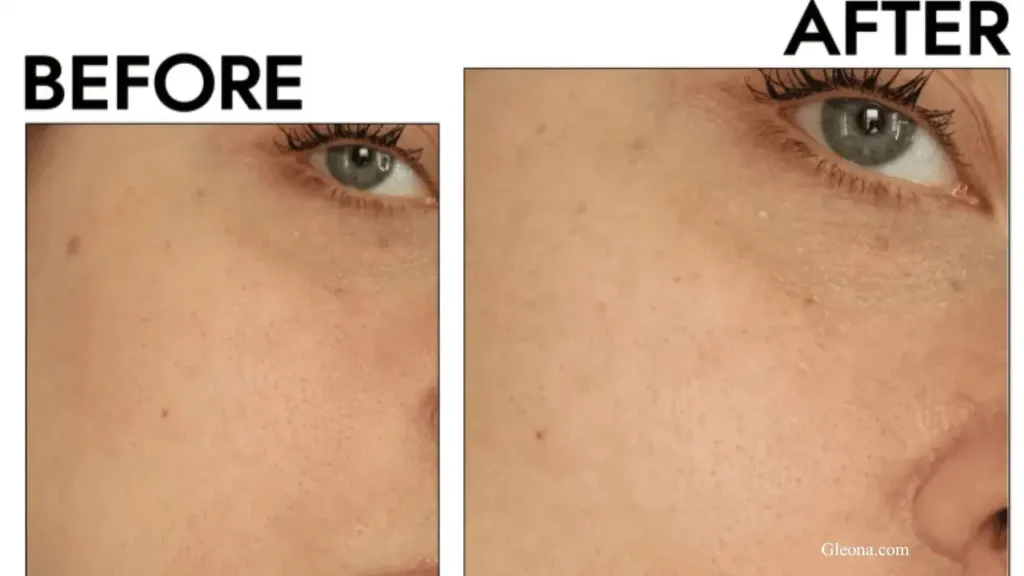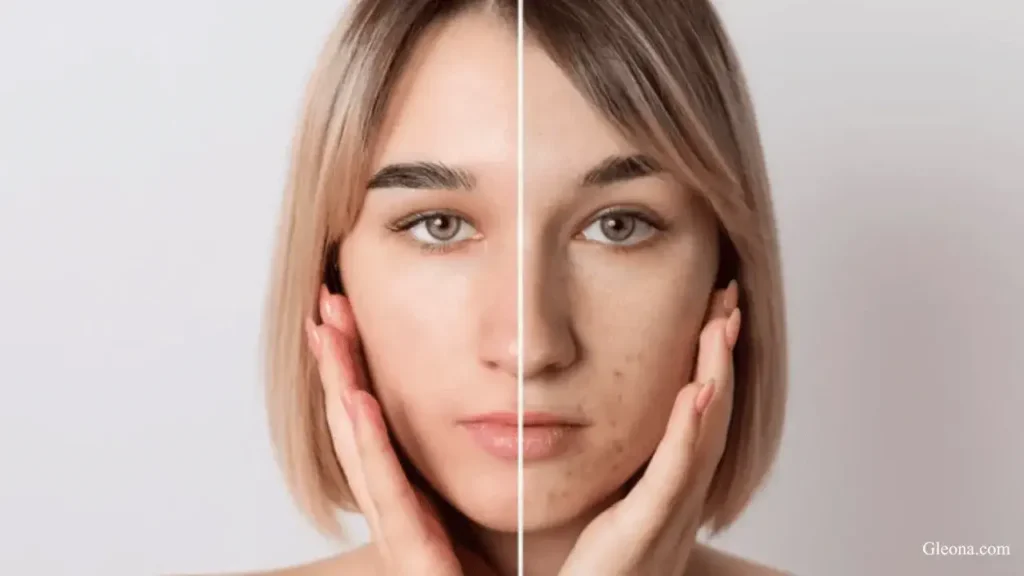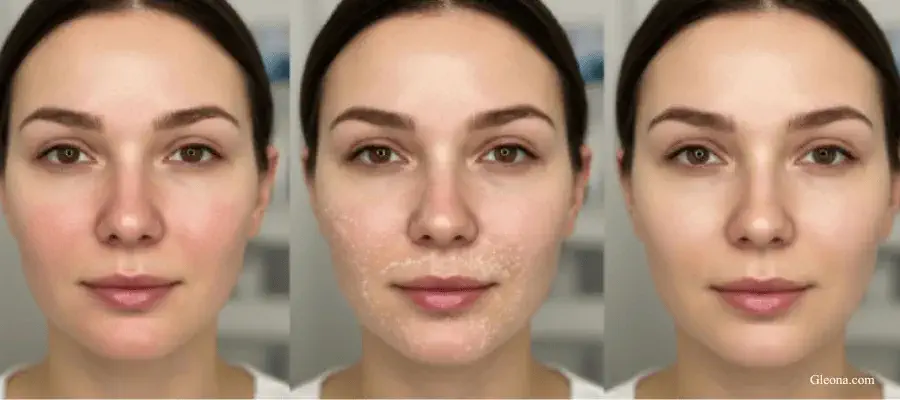Niacinamide has become a game-changer in skincare and for good reason. Known for its ability to brighten skin, reduce pores, and calm redness, it’s perfect for all skin types. In this post, you’ll learn how to use Niacinamide effectively in your daily skincare routine with a simple 5-step beginner-friendly guide that ensures real, glowing results.
What Is Niacinamide and Why It’s a Must-Have for Your Skin

Niacinamide, also known as Vitamin B3, is a powerhouse ingredient that supports nearly every aspect of healthy skin. It helps strengthen the skin’s natural barrier, boost hydration, and improve overall texture. Unlike some actives that cause irritation, Niacinamide is gentle enough for all skin types, including sensitive, oily, and acne-prone skin.
This multitasking vitamin works on a cellular level to reduce inflammation, control excess oil, and minimize the appearance of pores. It also brightens dull, uneven skin tones by slowing pigment transfer within the skin. Regular use of Niacinamide can make your complexion look smoother, firmer, and more radiant making it a must-have step in any skincare routine, whether you’re targeting acne, aging, or dryness.
Quick facts:
- Strengthens the skin barrier and locks in moisture
- Reduces redness, dark spots, and fine lines
- Balances sebum (oil) production for clearer skin
- Pairs safely with most ingredients, including hyaluronic acid and peptides
Top 5 Benefits of Using Niacinamide Daily
When added to your skincare routine, Niacinamide delivers visible improvements in texture, tone, and overall skin health. It’s a multitasking ingredient backed by dermatologists for its ability to target multiple concerns at once from dullness and breakouts to aging and dehydration. Here are the top five benefits you’ll notice with consistent daily use:
1. Brightens Dull, Uneven Skin Tone

Niacinamide helps fade dark spots and hyperpigmentation by slowing the transfer of melanin (pigment) to skin cells. Over time, your complexion looks brighter, smoother, and more even no harsh treatments needed.
2. Strengthens the Skin Barrier

A healthy skin barrier keeps moisture in and irritants out. Niacinamide boosts the production of ceramides, essential lipids that protect your skin against dryness, pollution, and UV damage. This results in softer, plumper, and more resilient skin.
3. Controls Excess Oil and Reduces Breakouts

If you struggle with oily or acne-prone skin, Niacinamide can help. It regulates sebum (oil) production, reducing clogged pores and minimizing breakouts. The result? Balanced, clearer-looking skin without over-drying.
4. Minimizes Pores and Refines Texture

By improving skin elasticity and barrier function, Niacinamide visibly reduces the appearance of enlarged pores. Consistent use smooths out rough texture, giving your skin a naturally refined and polished look.
5. Fights Signs of Aging

Niacinamide supports collagen production and protects against oxidative stress, helping reduce fine lines, wrinkles, and sagging. It’s one of the few ingredients that works for both prevention and correction of early aging signs.
Step-by-Step Tutorial How to Use Niacinamide in Your 5-Step Daily Routine
If you’re new to Niacinamide, the best way to get glowing, balanced skin is by incorporating it correctly into your daily skincare routine. Follow this simple 5-step routine designed to help you maximize Niacinamide’s benefits without irritation perfect for beginners!
Step 1: Cleanse Gently to Prep Your Skin
Start your morning and evening routine with a mild, pH-balanced cleanser. This removes oil, dirt, and makeup without stripping your skin’s natural moisture. Clean skin allows Niacinamide to penetrate more effectively.
Tip: Avoid harsh foaming cleansers with alcohol or sulfates they can weaken your skin barrier.
Step 2: Tone (Optional but Helpful)
A hydrating, alcohol-free toner helps balance your skin’s pH and preps it to absorb active ingredients better. If you have dry or sensitive skin, choose a toner with soothing ingredients like aloe vera or hyaluronic acid.
Why it matters: A balanced base enhances the absorption and performance of Niacinamide.
Step 3: Apply Niacinamide Serum
This is the key step! After cleansing (and toning), apply 2–3 drops of a Niacinamide serum evenly across your face and neck. Gently pat it in don’t rub.
Ideal concentration: Start with 5% Niacinamide if you’re new to it; go up to 10% for stronger results.
Avoid mixing Niacinamide with strong acids like pure Vitamin C (ascorbic acid) or exfoliants at the same time, especially if you have sensitive skin.
Step 4: Moisturize to Lock In Hydration
Seal in the goodness of Niacinamide with a lightweight moisturizer that supports your skin barrier. Look for ceramides, glycerin, or hyaluronic acid in the formula to boost hydration and smoothness.
Pro Tip: For oily skin, try a gel-based moisturizer; for dry skin, go for a creamy texture.
Step 5: Protect with Sunscreen (AM Routine)
Niacinamide works best when your skin is protected from UV damage. Always apply a broad-spectrum SPF 30 or higher as the final step in your morning routine.
Bonus: Niacinamide enhances your sunscreen’s protective effects, helping prevent new dark spots and sun damage.
Common Mistakes to Avoid When Using Niacinamide

While Niacinamide is one of the most beginner-friendly skincare ingredients, using it incorrectly can lead to irritation or reduced effectiveness. To get the most out of your serum, avoid these common mistakes that many skincare beginners make.
1. Using Too High a Concentration Too Soon
It might be tempting to grab the strongest serum available, but more isn’t always better. High concentrations (above 10%) can cause redness or stinging, especially for sensitive skin.
Start with 5% Niacinamide and gradually increase once your skin adjusts.
2. Mixing Niacinamide with Strong Acids or Exfoliants
Using Niacinamide alongside strong acids like Vitamin C (ascorbic acid), AHA, or BHA exfoliants in the same routine can cause temporary flushing or irritation.
Fix: Use Niacinamide in your morning routine and acids in your night routine, or apply them on alternate days.
3. Skipping Sunscreen
Niacinamide helps fade dark spots, but without daily sunscreen, UV rays will undo your progress.
Always finish your morning skincare routine with SPF 30+. This step keeps your skin protected and glowing.
4. Applying on Damp Skin (Immediately After Cleansing)
Applying Niacinamide on very wet skin can dilute the serum and reduce its absorption.
Best practice: Pat your face dry gently, then apply Niacinamide while it’s still slightly moist not dripping wet.
5. Expecting Instant Results
Niacinamide works gradually, improving tone and texture over several weeks.
Be patient: Visible improvements usually appear after 2–4 weeks of consistent use, with even better results after 8 weeks.
6. Ignoring Moisturizer After Application
Some users skip moisturizer, thinking Niacinamide is hydrating enough on its own. While it helps strengthen your barrier, it doesn’t replace hydration.
Lock it in: Always follow with a good moisturizer to seal in the benefits and keep your skin soft.
How to Choose the Right Niacinamide Product

With so many Niacinamide serums and creams on the market, finding the perfect one for your skin type can be tricky. The key is to match the formula strength, texture, and ingredients to your unique skin needs. Here’s how to choose wisely:
1. Check the Niacinamide Concentration
The concentration determines how powerful and gentle the product will be.
- Beginners or sensitive skin: Start with 2%–5% Niacinamide to avoid irritation.
- Oily or acne-prone skin: Opt for 5%–10% concentrations to control oil and minimize pores.
- For dark spots or anti-aging: Up to 10%–12% is effective, but always patch-test first.
Tip: More than 10% doesn’t necessarily mean better results just higher risk of dryness or redness.
2. Choose the Right Texture for Your Skin Type
- Oily/Combination skin: Go for a lightweight, water-based serum that absorbs quickly.
- Dry or mature skin: Try a creamy serum or Niacinamide moisturizer with added hydrators like ceramides or hyaluronic acid.
- Sensitive skin: Pick formulas labeled fragrance-free and non-comedogenic to reduce the risk of irritation.
3. Look for Complementary Ingredients
Niacinamide works best when paired with ingredients that enhance its effects:
- Hyaluronic Acid: Boosts hydration and plumps skin.
- Zinc: Reduces oil and inflammation (great for acne-prone skin).
- Ceramides: Strengthen the skin barrier and lock in moisture.
- Peptides or Retinol (at night): Support anti-aging and repair.
Avoid pairing Niacinamide with highly acidic formulas (like pure Vitamin C) in the same routine unless your skin is well-trained.
4. Check the Packaging and Brand Reputation
Look for airtight, opaque bottles that protect the formula from light and air, preserving its potency. Trusted skincare brands often list clinical studies or dermatologist-tested claims on their packaging.
Recommended brands:
- The Ordinary Niacinamide 10% + Zinc 1% (great for oily skin)
- La Roche-Posay Mela B3 Serum (brightening & gentle)
- CeraVe PM Facial Moisturizing Lotion (hydrating with 4% Niacinamide)
5. Patch-Test Before Regular Use
Even though Niacinamide is well-tolerated, always perform a patch test before applying it all over your face. Apply a small amount behind your ear or on your jawline and wait 24 hours
6. Consistency Is Key
The right product only works if you use it consistently. Apply Niacinamide once daily (morning or night), and after 1–2 weeks, increase to twice daily if your skin tolerates it well.
Results Timeline When Will You See Changes?

One of the best things about Niacinamide is that it works gently yet effectively giving visible improvements over time without irritation. However, like any skincare ingredient, results don’t happen overnight. The timeline depends on your skin type, routine consistency, and the product’s concentration.
Here’s what you can realistically expect when using Niacinamide daily:
After 1–2 Weeks: Hydration & Smoother Texture
During the first two weeks, your skin’s moisture barrier starts to strengthen. You’ll notice:
- Better hydration and less dryness
- Smoother skin texture
- Reduced redness or irritation (especially if your barrier was damaged)
Tip: Stay consistent Niacinamide builds results gradually with daily use.
After 3–4 Weeks: Brighter, More Even Skin Tone
By week 3 or 4, Niacinamide begins to fade dark spots, acne scars, and dullness by reducing melanin transfer. Your skin will start to look more radiant and balanced.
Keep pairing it with sunscreen to prevent new pigmentation.
After 6–8 Weeks: Pore Refinement & Oil Control
Around the two-month mark, Niacinamide’s oil-regulating and anti-inflammatory effects become more noticeable. You’ll likely see:
- Smaller-looking pores
- Fewer breakouts
- More balanced oil production throughout the day
After 10–12 Weeks: Visible Anti-Aging & Firmness
With long-term use, Niacinamide supports collagen production and protects your skin from environmental stressors. Expect to see:
- Fewer fine lines and wrinkles
- Improved firmness and elasticity
- A lasting, natural glow
Pro Insight: Dermatologists note that Niacinamide delivers maximum visible benefits around the 12-week mark, especially when used consistently with SPF and moisturizer.
Conclusion
Niacinamide isn’t just another skincare trend it’s a science-backed ingredient that can transform your skin from dull to radiant. Whether you’re targeting acne, uneven tone, or early signs of aging, this multitasking vitamin works gently yet powerfully to improve your overall complexion.
By following a consistent 5-step daily routine, choosing the right product for your skin type, and protecting your skin with SPF, you’ll start seeing visible results within weeks moother texture, refined pores, and a healthy glow that lasts.
For more about Skin Care Tips Please visit gleona.com.
FAQS
1. Can I use Niacinamide every day?
Yes! Niacinamide is gentle enough for daily use, both morning and night. In fact, consistent use helps you see results faster including brighter skin, smaller pores, and reduced redness. Just remember to pair it with moisturizer and sunscreen in the morning for maximum benefits.
2. Can I mix Niacinamide with other skincare ingredients?
Mostly, yes. Niacinamide works well with hyaluronic acid, ceramides, peptides, and retinol. However, avoid layering it directly with strong acids or pure Vitamin C (ascorbic acid) if you’re new to actives this can cause mild irritation. You can use them at different times of day (Vitamin C in the morning, Niacinamide at night).
3. How long does it take to see results from Niacinamide?
Most people start noticing smoother, more hydrated skin within 2–4 weeks. Brightening, pore refinement, and anti-aging effects usually appear after 6–12 weeks of consistent use. Patience and consistency are key Niacinamide’s results build over time.


